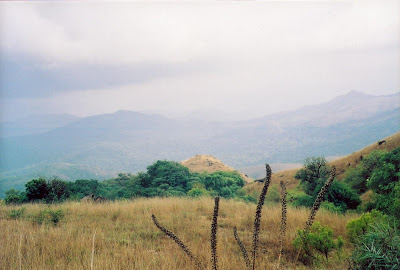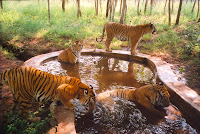Maximum city;I encountered this name from one of Amitav Ghosh’s comment on the book. He was very liberal in praising it, I was curious about Bombay always, many of my close ones live there and they always talk about the city, hence i wanted to read this book by Suketu Mehta and finally read the best book I read last year, and the list includes book like “Hungry tide” too. What this book is about? The title said Bombay lost and found and the end it was for Suketu not for the city, the whole book brings out really breathtaking truths about the city, I would say its Bombay discovered. Salman Ru shdies’ in praise for this book said the best description of the ruined metropolis. I was wondering why it is ruined? I was disappointed when I started reading the book, It appeared to me that only criticism is left for the city and after I read the first chapter my fear was confirmed. One may shelve the book if the read only the first chapter. To me Suketus’ home coming after 21 yrs. of stay in Newyork was more of emotion driven that need. Hence he sounded pretty frustrated over the situation in Bombay (he used the city name all through the book). At the end of first chapter I concluded this book is going to be a frustration of an US returned NRI who stayed here for only two and half years. I was so wrong!
shdies’ in praise for this book said the best description of the ruined metropolis. I was wondering why it is ruined? I was disappointed when I started reading the book, It appeared to me that only criticism is left for the city and after I read the first chapter my fear was confirmed. One may shelve the book if the read only the first chapter. To me Suketus’ home coming after 21 yrs. of stay in Newyork was more of emotion driven that need. Hence he sounded pretty frustrated over the situation in Bombay (he used the city name all through the book). At the end of first chapter I concluded this book is going to be a frustration of an US returned NRI who stayed here for only two and half years. I was so wrong!
“What does a man look like when he is on fire”? Well this was the way the second chapter started and after few lines I realized he is into serious business, I could not leave the book till I finished 584 pages. So what Suketu did? He took the decision to write this amazing book and started working on it with an eye of an anthropologist.
The first chapter he describes his drive towards Bombay, the drive many Mumbaikar can not avoid so easily, he comes back and the new Bombay called Mumbai and that was a revelation for him, he couldn’t identify the place he once belonged to. He was a foreigner in his own city, crisis for roof, water, bad weather, lack of a proper system to run the city and of course the crowd inflow in the city in this book. The high population density and steady inflow of people from outside the state was mentioned many a times in this thesis. He identified the people, who run the city, so he started with the Shiv Sena,
The second chapter is he talks about Hindu extremists. Suketu, though identified himself from hindu religious strata, strongly believed that the hindu extremist group Shiv Sena and their premier Bal Thakrey is pretty much responsible for the present state of the city. This chapter has a shocking description of a man when he was killed in fire and when it was from the killer himself it scares you. It’s a very moving chapter, the life of the people involved in the riot move around places like Jogeswari. The interesting part was his interview with Bal Thakrey himself, it is worth following.
Third long chapter is about cops in Mumbai, Suketu had really put down the vivid inside story goes around Mumbai cops, he gets in touch with a cop who was the key brain behind catching the 1993 Bombay blast accused. The whole chapter goes around the commissioner. His portray of the police department is really excellent, its almost not opinionated. He describes how the encounter specialist were born and the hypocrisies and underworld threat looms over Bombay police: “the second after Scotland yard”.
Without gangstars the city is incomplete hence Suketu gets himself inside the underworld, could bring out the stories about gang war and the lives of the shooters. Probably the most nonchalant way of describing the lives of these murderers, at times you may feel chill passing through you spine! His work never showed any dishonesty to the subject, to know how the big bosses think about themselves Suketu interviewed Chhota Sakeel, one of the most wanted gangster in India now lives in a neighboring country, the leader of the infamous D-Company. As I mentioned you feel chill when he describes about a murder in Bombay which shook the police department thoroughly as they didn’t knew the killers whom Suketu knew!
So his journey to find the lost Bombay doesn’t stop here, he wanted to go deep inside the gutter and discover how Bombay was lost. He met Monalisa a fictitious Bar girl, in a dance bar. It is through her eyes he brought out the painful story about these untouchables it the society. The best part of this section was that Suketu lived inside a story here and became one character, this part of the book I felt most touchy. The life of Honey the man who dances in the bar as a girl will surely leave an impact.
Then comes the Bombay where the new city lives, yes! The bollywood, inside the book, it came out many a time, that the city lives in a movie, starting from Bal Thakrey who according to Suketu gets philosophy from movies, even the ganstars think themselves a character in the movie, so how Suketu did there, well he wrote a script for a ‘hit’ movie called “Mishon Kashmir”! its imaginable how much inside he was in the industry. If you sometimes laugh during going through this book it is this section, its hilarious many times but really tragic. Whether its great Bachhans or Sharukh or Hritwik he came close to every one, he describes Sanjay Dutt’s life inside jail from his own version which media also did not have access to. He became a close friend of the renowned director Vidhu Vinod Chopra and Mahesh Bhatt. It was really interesting to know how people struggle inside the industry how the D-company clouds looms over them, and the extortionists and the sensor board the extremely sensitive crowd, it is an amazing description.
Does the story end here? No, so Suketu scripts a middle class family with aspirations inside, they move out from the slums to a small flat outskirt of Mumbai, as usual middle class stories don’t have excitements but you will feel the difference about Bombaities for sure. Their ambitions and needs are different from the others. How about the foothpath? Stats says 50% of the foot path in Mumbai is occupied by people, Suketu finds a poet in the street! The problems with Biharis in the city comes alive here. The young Bihari poet has been a representative of the dreamers inside the city.
The last chapter is the most violent without any decscription of bloodshed; he was talking about a Jain family who are becoming a monk. It is really beyond my imagination that how it will feel when the whole family stay together but without interacting and follow some rituals.
This book is a great example of the best kind of journalism. I would have tempted to say crime journalism, but he went beyond that. The lucid language of Suketu will really impress you. Many places his statement will surely leave more impact that the whole description. His writing was not opinionated at all. He praised the city dwellers at times, Mumbai is a safe city, much safer than the other cities in India, no mugging, people help out if you are in trouble. Girls can freely roam around 12 in the night, which is not imaginable in cities like Delhi. Maximum city really deserves credit, though there are criticisms about this book, but i should say hats off to Suketu!
 from right bottom: Ritwik, Arijit,Subhajit, Debdutta, Apurba,Amartya, Shantanu,Ujjawal, -,Rupesh,Me,
from right bottom: Ritwik, Arijit,Subhajit, Debdutta, Apurba,Amartya, Shantanu,Ujjawal, -,Rupesh,Me, 






